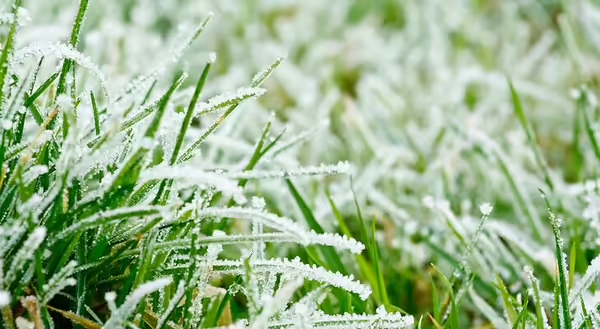
We’re nearing that time of year when we’ll start to get warnings about the potential for a frost or freeze taking place. Is there really a difference between the two?
Frosts occur close to the ground
Frosts can occur even when a thermometer at eye level shows temperatures a few degrees above freezing. On calm, clear nights during the fall, winter, and spring, heat from the ground and within a foot or two of the ground escapes to higher elevations very quickly. Under these conditions, temperatures close to the ground can fall to 32 degrees, while 4 to 5 feet higher the temperature can be several degrees above freezing. In some situations, the 32-degree height may be present for just a few inches above the surface. Water vapor in air right at the surface goes directly from a gas to a solid, creating frost.
When temperatures are warmer with height, as in this example, that’s called a temperature inversion. This is a common occurrence on calm, clear nights.
Freezes occur with deeper cold air
A freeze occurs when the temperature several feet or even higher above the surface is 32 degrees or below. This may happen when a very cold air mass comes in.
Of course, during the winter, we are not overly concerned about frosts or freezes, it’s just part of everyday life. We do get concerned when one of these may occur in late spring or early fall, when there is still vegetation growing.
If a freeze is present for a short time and does not venture below 32 degrees, some plants may be hardy enough to survive. A hard freeze is said to be any time the temperature is at or below 28 degrees, and at that point most plants will be done for the growing season.
Use the Vegetation Impact Program tool for frost and freeze guidance
A great tool that can be used to help with frost/freeze guidance is the Vegetation Impact Program. The VIP is a monitoring, assessment, and networking program hosted by the Midwestern Regional Climate Center. It integrates online climate monitoring information and stakeholder input to provide a suite of resources that can help minimize negative vegetation impacts, mitigate climate variability effects, and develop adaptation plans to better prepare for extreme and ever-changing environmental conditions. You can find information on frost/freeze dates for your county, dates for when the latest spring and earliest fall events have occurred, and you can also help by adding information on conditions in your area.
About the Blog
The All About Weather blog by Duane Friend explores the environment, climate, and weather topics for Illinois. Get in-depth information about things your weather app doesn't cover, from summer droughts to shifting weather patterns. Never miss a new post!